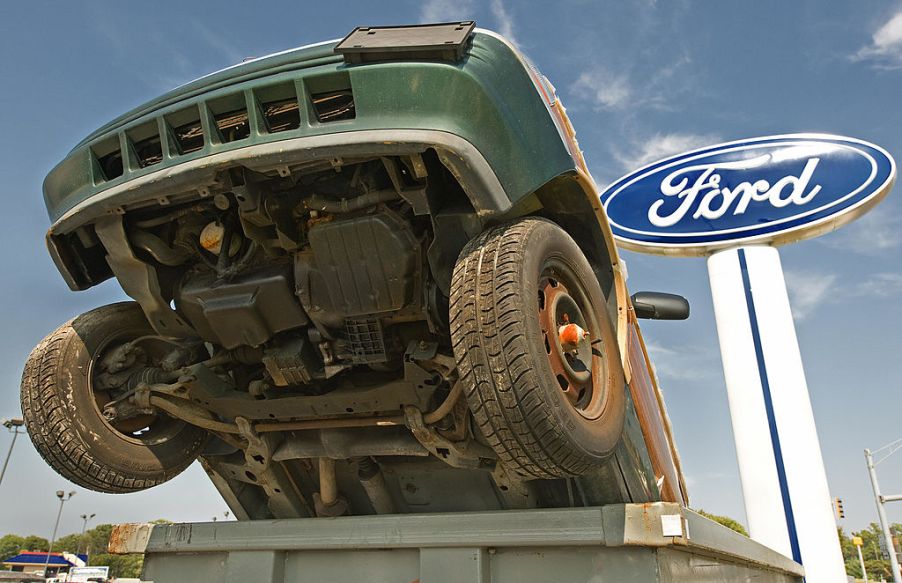
We Can Do Better Than “Cash For Clunkers” Redux To Stimulate Car Sales
Sometimes even bad ideas should be explored to see if there is a solution hidden there. But sometimes bad ideas are just bad ideas. The “Cash for Clunkers” vehicle sales stimulus program back in 2009 was a bad idea. So, why is Ford bleating about doing it again? Because it was effective for car manufacturers. But was it really successful? With ten years of hindsight, it appears at best to have been a wash. We can do better than a Cash for Clunkers program to help stimulate car sales in these bleak times.
American car companies have been talking to congress about another Cash for Clunkers program

The American car companies, especially Ford, have been encouraging Congress to devise a plan to help spur vehicle sales. That could potentially be a good idea. What’s worse is that Ford is pushing a plan similar to the Cash for Clunkers program of 2009. Ford’s vice president of US marketing Mark LaNeve told Bloomberg, “We think some level of stimulus somewhere on the other side of this would help not only the auto industry and our dealers, which are a huge part of our overall economy but will help the customers as well.”
We get it. Vehicle sales have tanked due to the coronavirus pandemic. In fact, everything is tanking over the “stay at home” directive most are heeding. So Ford is looking at how it can get out of this huge hole that gets deeper day by day.
Cash for Clunkers offered vouchers to help stimulate car sales
The plan during the recession to crank up car sales was for the Feds to offer up vouchers between $2,500 and $4,500. It was called the Car Allowance Rebate System. These vouchers would be used to buy a new, more fuel-efficient car. But you had to have an older car to trade in; a clunker. The twofold effect was to help Detroit sell cars and also clean the environment, all good things.

Congress provided $1 billion to kick things off. Soon, it pitched in an additional $2 billion. During the period that the cash held up sales were up. On the surface at least it was successful. But once the funds were gone the sales slowed way up.
The stimulus plan had its drawbacks
You can understand why. If you were thinking about getting a new car around $4,000 in the hood was a good incentive to spring. Also, after the money was gone would you still be up for buying a car you know you’re paying $4,000 more for than last week?
After just a few months the results were a wash. Everything evened up once sales were spread out over half a year. Numerous studies indicated the same thing. The Journal of Environmental Economics and Management found about 50% of the sales were by people intending on purchasing a car anyway. So any figure you see touting the program you can immediately cut in half.
There was a lot of waste connected with scrapping so many good cars
Something not factored into the success of the plan was the carbon footprint. By taking a car, even a polluting car, and scraping it wastes the resources and energy it took to produce it. Engines and transmissions were emptied and then sodium silicate was run into them until they seized. Now, there was no opportunity to sell engines and transmissions to rebuilders. What few components were left had little value in the secondary market.

Even though there was no benefit to crushing the cars turned in there was a downturn in carbon emissions attributed to the program. It is estimated that between 10-30 million tons of emissions were taken out of the atmosphere. Some give credit to the combination of a recession and high fuel prices tipping things in a cleaner direction before the program even started.
The newer the vehicle the cleaner it will be. So, now that we’re eleven years hence from the first Cash for Clunkers if the rules were the same then much cleaner cars will be turned in. This time around the environmental improvements could be very small.
Lower economic groups couldn’t afford new cars
Probably the cars polluting the most were owned by people in lower economic groups that can’t afford to spring for a new car. So, there may have been cars scrapped that were better than many that were being used in lower economic situations. At the very least someone should be able to go into a compound area and if they select a car that gets better mileage and is in better condition they should be able to trade without paying a dime.
Finally, though this should be at the bottom of the list it is near and dear to many car enthusiasts. Some cars turned in have collectible value. To the program’s credit, some cars were set aside and later resold. The Hot Rod Magazine “Crusher Camaro” 1967 Camaro was but one of many cars turned into the program that was ultimately saved.
We are coming up on a terrible economic crisis from the pandemic shutdown, not to mention the loss of life. All businesses large and small will be looking for help. Let’s hope that when it comes to car manufacturers a better plan than Cars for Clunkers surfaces.



